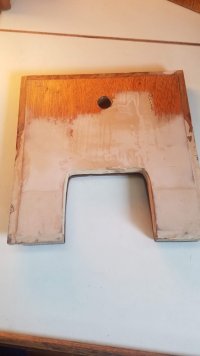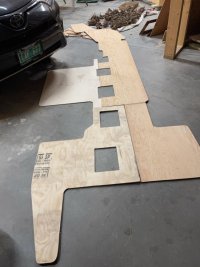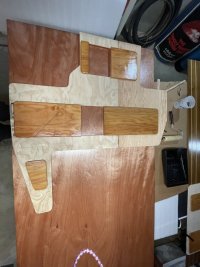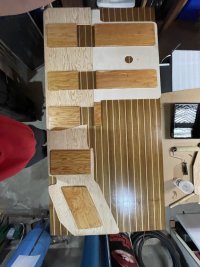Just another observation and data point—no right or wrong: I like the wooden ‘dam’ somebody built around your mast base to channel the water—it looks better than my caulked-in channel. I noticed yours drains forward, under the TAFG, rather than aft into the “shower” bilge. The only problem with that might be that it’s harder to get water out from under the TAFG than out of the molded bilges.
My mast drains aft into the shower bilge. The first two years I had the boat, the shower bilge had a limber hole at the very bottom. So, after every heavy rain, the shower bilge water would flow under the TAFG and into the next two bilge sections aft (which also have limber holes at the bottom). I spent a lot of time on my hands and knees removing that water.
Last year, I sealed up the old shower bilge limber hole and cut a new one in nearer the top of the bilge. The shower bilge can now hold about 1.5+gal before it needs to be pumped out (to prevent water from entering the limber hole and going under the TAFG). In the Seattle rains, this usually equates to about 2” of rainfall in stormy conditions before the shower bilge is filled. Since this change, I‘ve had dry bilges in winter (other than the shower bilge) for the first time since buying the boat.
My mast drains aft into the shower bilge. The first two years I had the boat, the shower bilge had a limber hole at the very bottom. So, after every heavy rain, the shower bilge water would flow under the TAFG and into the next two bilge sections aft (which also have limber holes at the bottom). I spent a lot of time on my hands and knees removing that water.
Last year, I sealed up the old shower bilge limber hole and cut a new one in nearer the top of the bilge. The shower bilge can now hold about 1.5+gal before it needs to be pumped out (to prevent water from entering the limber hole and going under the TAFG). In the Seattle rains, this usually equates to about 2” of rainfall in stormy conditions before the shower bilge is filled. Since this change, I‘ve had dry bilges in winter (other than the shower bilge) for the first time since buying the boat.
Last edited:







